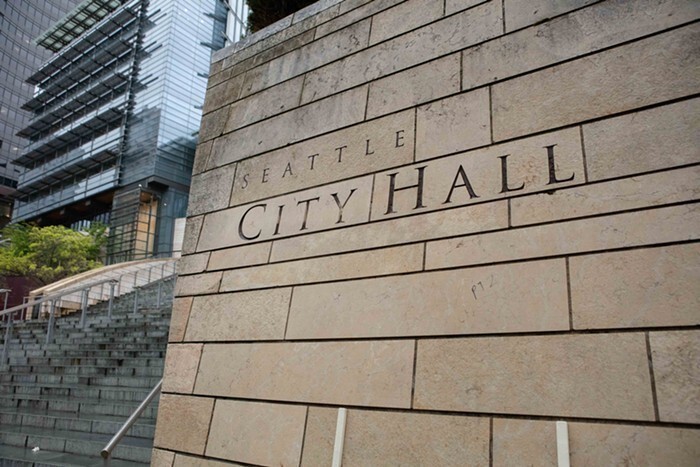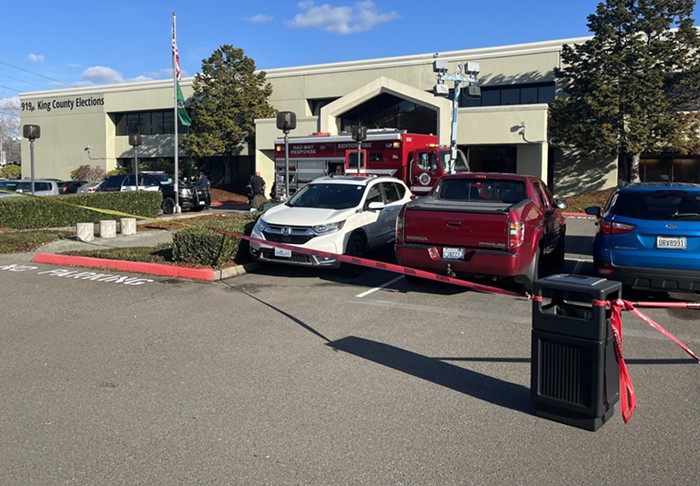On July 5, Seattle police officers worked late into the evening pulling bullet fragments out of the walls of the Garfield Community Center on 23rd Avenue and East Cherry Street. Just before 7:00 p.m., a group of young men and women had been sitting on the steps of the community center when a green Chevy Blazer pulled up to a stoplight. According to a police report, the driver of the SUV opened fire on the group, shooting off two to five rounds—striking a 16-year-old girl in the right buttock and a 25-year-old man in the leg and abdomen—before speeding off.
This isn't the first time gunfire has erupted outside of the community center, which is adjacent to Garfield High School and the Garfield Teen Life Center on 23rd Avenue. On Halloween in 2008, 15-year-old Quincy Coleman and his 16-year-old friend were shot near the community center. Coleman died from his injures. Two months later, former Franklin High School basketball star Donnie Cheatham was blinded after he was shot in the temple while walking outside of the community center.
Community centers are supposed to be safe places for kids, to draw them away from gangs and guns. Under the city's Youth Violence Prevention Initiative, a $9 million program introduced by the mayor last year to reduce youth and gang violence in Seattle, some community centers will become a staging ground for targeted intervention and prevention programs designed to reduce youth violence by 50 percent. Community centers are supposed to be safe harbors for kids to take up basketball and tae kwon do—rather than assault and robbery—but that $9 million is spread over two years and only a fraction of it goes to community centers. For instance, several million will go the city's Human Services Department for things like anger-management and youth-employment programs.
According to records obtained from Seattle Parks and Recreation, community centers in South Park and Rainier Beach and the Southwest Community Center in the Roxhill neighborhood have experienced problems with fights, gang graffiti, car prowls, and guns in the last three years. Police records from the last month also indicate problems at centers in Alki Beach, Lake City, and Yesler Terrace.
On June 20, a group of teen boys flashed a gun at several girls outside of the Alki Community Center. A day earlier, police responded to the community center after a teenage girl reported she was robbed for her cell phone. According to a police report, the teenage girl asked a male friend to hold her iPhone while she tied a friendship bracelet to his wrist, then another boy approached them, punched the boy in the face, and took off with the phone.
That same evening, police busted a teenage boy for carrying a machete and a three-inch knife in a park next to the Lake City Community Center—which unlike other community centers is owned, but not run, by the city—after they caught him smoking pot outside of a dance at the center, a report says. On June 24, a 26-year-old man also reported being robbed near the Yesler Community Center by a group of teens, who punched him before making off with his cell phone and wallet.
In the last year, car prowlers have plagued the Rainier Beach Community Center; staff members, internal reports say, believe several teen boys are behind the break-ins. A group of teen boys flashed a gun at a woman near the South Park center in January 2008, and in June 2007, a police officer used pepper spray to clear the dance floor at a late-night teen event after a group of boys began brawling at the Southwest Community Center.
Despite the spate of recent incidents around community centers, Seattle parks department spokeswoman Dewey Potter does not believe there is a widespread problem and says kids still see community centers as safe places. "During the shootings outside of Garfield," Potter says, "kids ran into the community center because they felt it was a safe and neutral place." However, one staff member at the Garfield Community Center says a number of families stopped coming to the program following the shootings. Potter adds that parks officials have begun meeting with the police department to keep up on "trouble spots" like the Rainier Beach and South Park centers.
City council member Bruce Harrell, the vice-chair of the council's public-safety committee, believes some centers should have more structure and be staffed with police officers, as several schools were last year. But there are no current plans to assign cops to community centers. Harrell has been working on a plan to enlist an army of volunteers for an at-risk-youth mentorship program, but that's a ways off. "If you're dealing with higher numbers [of kids] without a necessary agenda, the result could very well be chaos and fights," Harrell says. "Unless we have some structure, we could inadvertently create the same kind of atmosphere we don't want to create." ![]()


















